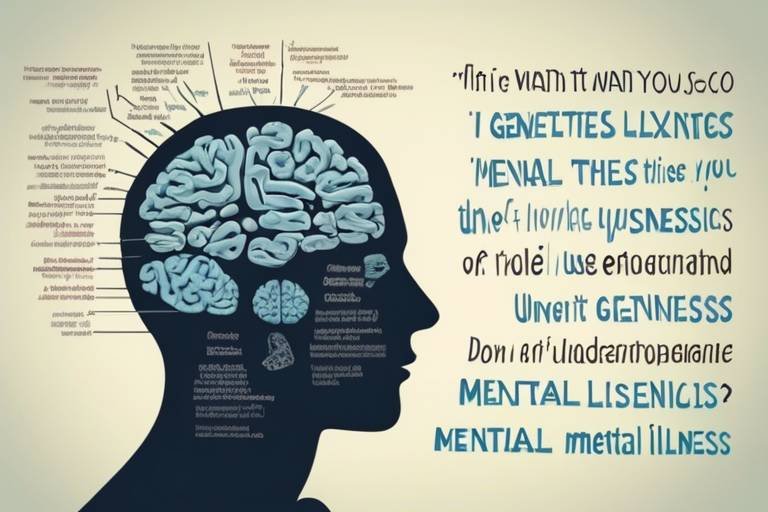Understanding the Science of Animal Intelligence
Have you ever wondered just how smart animals really are? The world of animal intelligence is not only fascinating but also incredibly complex. From the cleverness of crows to the emotional depth of elephants, animals exhibit a range of cognitive abilities that can often surprise us. Animal intelligence encompasses various skills, including problem-solving, communication, and social interaction, which are crucial for survival. As we explore this captivating subject, we’ll dive into the evolutionary paths that have shaped these abilities, the methods scientists use to measure intelligence, and what these findings mean for our understanding of intelligence itself.
Throughout history, humans have often placed themselves at the pinnacle of intelligence, but recent studies reveal that many animals possess remarkable cognitive skills that challenge this notion. For instance, research has shown that some species can use tools, understand complex social structures, and even communicate in ways that resemble human language. This leads us to a crucial question: if animals can exhibit such advanced capabilities, what does that say about the nature of intelligence? Is it a trait solely reserved for humans, or is it a spectrum that spans across species?
In this article, we will embark on a journey to uncover the science behind animal intelligence. We’ll explore how intelligence has evolved across different species, the various methods researchers employ to assess cognitive abilities, and the implications of these findings for conservation and ethics. By the end of this exploration, you might find yourself looking at animals in a whole new light, recognizing their intelligence as not just a curiosity, but an essential aspect of their existence.
Understanding how intelligence has evolved in the animal kingdom is like peeling back the layers of an onion. Each layer reveals not just the capabilities of different species but also the environmental pressures that shaped these traits. Evolution has favored cognitive abilities that enhance survival and reproductive success. For example, animals that can solve problems or navigate complex social environments are often better equipped to find food, avoid predators, and successfully raise their young. This adaptive advantage has led to the development of diverse forms of intelligence across species.
Consider the case of primates, whose advanced cognitive abilities are closely linked to their social structures. Living in groups requires a level of social intelligence that involves understanding relationships, recognizing individuals, and even manipulating social dynamics to one’s advantage. On the other hand, species like dolphins showcase their intelligence through sophisticated communication and problem-solving skills, essential for their survival in the vast ocean. These evolutionary paths highlight that intelligence is not a one-size-fits-all trait but rather a mosaic of abilities tailored to each species' unique environment.
How do scientists measure something as abstract as intelligence in animals? The methods are as varied as the species they study. Researchers often employ a combination of problem-solving tasks, memory tests, and social learning experiments to assess cognitive abilities. For instance, a common approach is to present animals with puzzles that require them to manipulate objects to obtain a reward, such as food. This not only tests their problem-solving skills but also their ability to plan and execute a strategy.
Memory tests can reveal how well animals can remember past experiences or locations, while social learning experiments assess their ability to learn from others. One fascinating example is the use of observational learning, where animals watch their peers solve a problem and then replicate the behavior. This method has been observed in various species, including birds and mammals, showcasing their ability to learn from social interactions, which is a hallmark of intelligence.
When we compare the cognitive abilities of different species, it becomes evident that intelligence is not a linear scale but rather a complex web of traits. Some animals excel in specific areas while others may have a more generalized intelligence. For example, while humans are known for their advanced reasoning and language skills, many animals demonstrate impressive abilities in areas like navigation, memory, and social interaction.
This comparative cognition sheds light on the evolutionary processes that have shaped intelligence. By studying the similarities and differences among species, researchers can better understand the adaptive significance of these traits. It raises intriguing questions: How did certain cognitive abilities evolve? What environmental pressures drove these changes? And what can we learn about our own intelligence by studying the animal kingdom?
Social intelligence is a fascinating aspect of animal cognition, encompassing the ability to navigate complex social structures and relationships. Certain species, such as elephants and primates, exhibit profound social behaviors that indicate a deep understanding of emotions and social dynamics. For instance, elephants are known to mourn their dead, showing an emotional depth that suggests a form of empathy.
Moreover, social intelligence is often linked to communication skills. Animals use a variety of vocalizations, gestures, and signals to convey information and emotions. This form of communication not only facilitates social bonding but also plays a crucial role in survival. By understanding their social environment, animals can make informed decisions that enhance their chances of survival.
Tool use is often considered a hallmark of intelligence, and many species have demonstrated this remarkable ability. From crows using sticks to extract insects from tree bark to chimpanzees fashioning tools for nut cracking, the cognitive processes involved in tool use reveal a level of foresight and planning. This ability to manipulate the environment to achieve a goal is a clear indicator of advanced cognitive skills.
The forms of communication in the animal kingdom are as diverse as the species themselves. Some animals rely on vocalizations, while others use body language or even chemical signals to convey messages. For example, dolphins have a complex system of clicks and whistles that they use to communicate with one another, while honeybees perform intricate dances to inform their hive about the location of food sources. Understanding these forms of communication is essential for grasping the social dynamics of animal groups and their survival strategies.
Throughout our exploration of animal intelligence, we encounter several species that stand out due to their remarkable cognitive abilities. Dolphins, known for their sophisticated communication and social structures, exhibit behaviors that suggest a high level of intelligence. Elephants display emotional intelligence, forming deep social bonds and exhibiting empathy. Crows, often underestimated, demonstrate problem-solving skills that rival those of primates. By examining these case studies, we gain insights into the diverse expressions of intelligence in the animal kingdom.
The environment plays a crucial role in shaping the intelligence of different species. Habitat complexity, social structures, and ecological challenges all influence the development of cognitive abilities. For instance, animals living in intricate environments may develop advanced problem-solving skills to navigate their surroundings, while social species may evolve heightened social intelligence to manage their relationships.
Understanding animal intelligence carries significant implications for conservation and ethics. As we recognize the cognitive capabilities of various species, it becomes increasingly important to protect their habitats and ensure their survival. Ethical considerations also arise in how we treat intelligent animals, prompting discussions about their rights and welfare. By acknowledging the intelligence of animals, we can advocate for their protection and foster a deeper respect for the animal kingdom.
- What defines animal intelligence? Animal intelligence is defined by a range of cognitive abilities, including problem-solving, social interaction, and communication skills.
- How do scientists measure animal intelligence? Researchers use various methods, such as problem-solving tasks and memory tests, to assess cognitive abilities in animals.
- Which animals are considered the most intelligent? Species like dolphins, elephants, and crows are often cited as some of the most intelligent animals due to their advanced cognitive skills.
- What role does environment play in animal intelligence? The environment influences the development of intelligence, with factors like habitat complexity and social structures shaping cognitive abilities.
- Why is understanding animal intelligence important? Recognizing animal intelligence is crucial for conservation efforts and ethical considerations regarding how we treat intelligent species.

The Evolution of Animal Intelligence
When we think about intelligence, we often picture humans as the pinnacle of cognitive capability. However, the truth is that intelligence has evolved in various forms across the animal kingdom, driven by the need for survival and adaptation. Just like a finely tuned machine, each species has developed its own set of cognitive skills that allow it to navigate the challenges of its environment. From the swift-thinking octopus to the problem-solving crow, the evolution of animal intelligence is a story of innovation and adaptation.
The evolutionary journey of intelligence can be traced back to the early days of life on Earth. As species adapted to their surroundings, those with enhanced cognitive abilities often had a distinct advantage. For instance, animals that could remember the locations of food sources or recognize predators were more likely to survive and reproduce. This natural selection process has led to a fascinating array of intelligent behaviors that we observe today.
To better understand this evolution, we can categorize animal intelligence into several key areas:
- Problem-solving abilities: Animals that can devise strategies to overcome obstacles demonstrate a higher level of cognitive function.
- Social learning: The capacity to learn from others is crucial in species that live in groups, enabling them to share knowledge and adapt to new challenges.
- Memory: Animals with excellent memory can recall past experiences, which is vital for finding food and avoiding dangers.
As we look at various species, we can see how these cognitive traits have evolved in response to environmental pressures. For example, the African grey parrot has developed remarkable vocal mimicry and problem-solving skills, which are thought to aid in social interactions and foraging. Similarly, the bottlenose dolphin exhibits complex social behaviors and communication skills that suggest a high level of intelligence.
Interestingly, the evolution of intelligence is not a linear path. It varies significantly across species, shaped by their ecological niches and social structures. For instance, animals that live in complex social groups, like elephants and primates, often showcase advanced social intelligence, which includes empathy, cooperation, and even grief. In contrast, solitary animals may develop different cognitive strategies focused on survival skills and environmental navigation.
Moreover, the evolution of intelligence is also influenced by brain size and structure. The encephalization quotient (EQ), a measure of brain size relative to body size, serves as a useful indicator of cognitive potential. For example, humans have a high EQ, but so do some cetaceans and primates, suggesting that these species have also developed advanced cognitive abilities. This correlation between brain structure and intelligence opens a fascinating window into the evolutionary processes that have shaped the animal kingdom.
In conclusion, the evolution of animal intelligence is a complex tapestry woven from the threads of survival, adaptation, and social interaction. Understanding how intelligence has developed across species not only enriches our knowledge of the animal kingdom but also challenges our perceptions of what it means to be intelligent. As we continue to study these incredible creatures, we uncover the intricate ways in which intelligence manifests in the wild, providing us with deeper insights into our own cognitive evolution.
- What is animal intelligence? Animal intelligence refers to the cognitive abilities of non-human species, including problem-solving, memory, and social learning.
- How do researchers measure intelligence in animals? Researchers use various methods, including problem-solving tasks, memory tests, and social learning experiments to assess animal intelligence.
- Why is understanding animal intelligence important? Understanding animal intelligence can provide insights into evolutionary processes, enhance our appreciation for wildlife, and inform conservation efforts.

Measuring Animal Intelligence
When it comes to understanding animal intelligence, the first question that springs to mind is: How do we measure it? Unlike human intelligence, which can be assessed through standardized tests, measuring cognitive abilities in animals is a bit more complex. Researchers employ a variety of innovative methods tailored to the unique characteristics of different species. These methods can be broadly categorized into several approaches, each designed to tease apart the intricate workings of animal minds.
One popular method for assessing intelligence is through problem-solving tasks. These tasks often involve puzzles or challenges that require an animal to figure out a solution. For instance, consider the classic example of a chimpanzee using a stick to retrieve a banana from a high perch. Such tasks not only demonstrate the animal's ability to manipulate objects but also showcase their understanding of cause and effect. This kind of intelligence reflects both cognitive flexibility and the ability to learn from experience.
Another essential aspect of measuring intelligence is through memory tests. Animals, much like humans, rely on memory to navigate their environments, find food, and interact with others. Researchers often design experiments that test an animal's ability to remember locations, recognize individuals, or recall past experiences. For example, studies have shown that elephants have remarkable long-term memory, which helps them remember water sources and social bonds over long periods. Such findings emphasize the importance of memory in survival and social dynamics.
Moreover, researchers also explore social learning as a measure of intelligence. This involves observing how animals learn from one another, which can be particularly insightful in species that live in complex social structures. For example, crows and parrots are known for their ability to learn new skills by watching their peers. This capacity for social learning indicates not just intelligence, but also an understanding of social cues and communication.
To provide a clearer picture of these methods, here’s a simple table summarizing the key approaches used in measuring animal intelligence:
| Method | Description | Example Species |
|---|---|---|
| Problem-Solving Tasks | Challenges that require manipulation of objects to achieve a goal. | Chimpanzees, Dolphins |
| Memory Tests | Experiments designed to assess the ability to recall information. | Elephants, Ravens |
| Social Learning | Learning that occurs through observing and interacting with others. | Crows, Parrots |
In addition to these methods, researchers are increasingly utilizing neurobiological approaches to understand the underlying mechanisms of intelligence. By studying brain structure and function, scientists can gain insights into how different species process information. For instance, the relative size of the brain, particularly the neocortex, can provide clues about an animal's cognitive capabilities. However, it’s essential to note that intelligence is not solely determined by brain size; rather, it's the complexity and organization of neural connections that truly matter.
Ultimately, measuring animal intelligence is a fascinating field that continues to evolve. As we develop more sophisticated methods and technologies, our understanding of the cognitive abilities of various species expands. This exploration not only enriches our knowledge of the animal kingdom but also challenges our perceptions of intelligence itself. Who knew that the minds of animals could be so intricate and diverse?
- What is animal intelligence? Animal intelligence refers to the cognitive abilities of animals, including problem-solving, memory, and social learning.
- How do researchers measure animal intelligence? Researchers use various methods such as problem-solving tasks, memory tests, and social learning experiments to assess intelligence in animals.
- Can animals learn from each other? Yes, many species, including crows and dolphins, demonstrate the ability to learn new skills by observing their peers.
- Does brain size determine intelligence? While brain size can provide some insights, the complexity of neural connections is a more critical factor in determining intelligence.

Comparative Cognition
When we dive into the realm of , we’re not just comparing the mental abilities of different species; we’re unraveling a tapestry woven with the threads of evolution, adaptation, and survival. It’s a captivating journey that allows us to peek into the minds of creatures vastly different from ourselves. Have you ever wondered how a crow can solve complex puzzles while a dolphin communicates with intricate clicks and whistles? The answers lie in the unique evolutionary paths that have shaped the cognitive abilities of each species.
At the heart of comparative cognition is the idea that intelligence is not a one-size-fits-all trait. Different animals have evolved distinct cognitive skills tailored to their specific environments and social structures. For instance, primates are known for their remarkable problem-solving abilities and social intelligence, which are crucial for navigating their complex social hierarchies. In contrast, birds, particularly corvids like ravens and crows, showcase extraordinary memory and tool-use skills, which are vital for foraging and survival in their habitats.
One fascinating aspect of comparative cognition is how these cognitive traits can sometimes mirror human abilities. For example, studies have shown that some species exhibit forms of self-awareness, a trait once thought to be uniquely human. The famous mirror test, which assesses whether an animal can recognize itself in a mirror, has revealed that not only great apes but also elephants and even some birds can pass this test. This challenges our understanding of intelligence and raises questions about the emotional and cognitive lives of these animals.
To illustrate the differences and similarities in cognitive abilities among various species, let’s take a closer look at a few examples:
| Species | Notable Cognitive Ability | Implication |
|---|---|---|
| Dolphins | Complex communication | Indicates advanced social structures |
| Great Apes | Tool use and problem-solving | Shows adaptability in varied environments |
| Crows | Planning and foresight | Demonstrates advanced cognitive processing |
These examples highlight the diversity of cognitive abilities across the animal kingdom. Interestingly, the evolutionary pressures faced by each species have led to the development of unique problem-solving skills. For instance, while dolphins rely heavily on their communication skills in social contexts, crows have adapted to use tools to access food, showcasing their intelligence in different ways.
Moreover, the study of comparative cognition also sheds light on the concept of convergent evolution, where unrelated species develop similar traits due to facing similar environmental challenges. This phenomenon suggests that intelligence, in its many forms, is a valuable asset that can arise independently across different evolutionary lineages.
As we continue to explore the vast landscape of animal intelligence, we gain a deeper appreciation for the incredible adaptations that have emerged in response to the challenges of survival. Understanding these cognitive abilities not only enriches our knowledge of the animal kingdom but also prompts us to reflect on our place within it. After all, if animals can exhibit such profound intelligence, what does that say about our responsibilities toward them and their habitats?
- What is comparative cognition?
Comparative cognition is the study of the cognitive abilities of different species, focusing on how these abilities have evolved and how they compare to human cognition. - Why is studying animal intelligence important?
Understanding animal intelligence helps us gain insights into evolutionary processes, animal behavior, and the ethical considerations surrounding conservation efforts. - Can animals exhibit self-awareness?
Yes, certain species, such as great apes, elephants, and some birds, have demonstrated self-awareness through tests like the mirror test.

Social Intelligence in Animals
When we think about intelligence, we often picture humans solving complex problems or creating art. However, the animal kingdom is filled with remarkable examples of social intelligence that can leave us in awe. Social intelligence refers to the ability of animals to navigate their social environments, understand relationships, and communicate effectively with others. This fascinating aspect of cognition plays a crucial role in survival, reproduction, and the formation of social bonds.
Many species exhibit sophisticated social behaviors that demonstrate their cognitive abilities. For instance, elephants are known for their strong family ties and intricate social structures. They communicate through a variety of vocalizations and body language, showing empathy and cooperation. When a member of their herd is in distress, elephants have been observed rushing to offer support, showcasing an emotional understanding that is quite profound.
Similarly, primates, such as chimpanzees and bonobos, exhibit complex social dynamics. They engage in behaviors like grooming, which not only helps maintain hygiene but also strengthens social bonds. This grooming behavior is a form of social currency, allowing individuals to build alliances and navigate the intricate web of relationships within their group. The ability to recognize individuals, remember past interactions, and predict future behaviors is a testament to their advanced social intelligence.
Moreover, corvids, such as crows and ravens, have shown impressive problem-solving skills and social awareness. These birds are capable of using tools, planning for the future, and even understanding the perspectives of their peers. In one remarkable study, crows were able to figure out a complex series of steps to access food, demonstrating not just intelligence but a keen understanding of their social environment and the actions of other crows.
Social intelligence is not just about interaction; it also involves communication. Animals utilize a wide range of signals, from vocalizations to body language, to convey messages. For example, dolphins use a sophisticated system of clicks and whistles to communicate with one another, often coordinating their actions during hunting or social interactions. This intricate communication system reflects their high level of cognitive processing and social awareness.
In addition to communication, social intelligence includes the ability to learn from others. Many species are capable of social learning, where they acquire knowledge by observing and imitating the behaviors of their peers. This can be seen in octopuses, which have been observed learning how to open jars by watching other octopuses. Such learning is crucial for adapting to changing environments and enhancing survival skills.
Understanding social intelligence in animals has significant implications for conservation and our ethical responsibilities toward these creatures. Recognizing that many animals possess complex social structures and emotional lives can influence how we approach their conservation. Protecting their habitats and ensuring their social groups remain intact is essential for their well-being and survival.
In conclusion, social intelligence in animals is a captivating field of study that reveals much about the cognitive abilities of various species. From elephants to crows, the ability to navigate social landscapes, communicate effectively, and learn from one another highlights the rich tapestry of intelligence that exists beyond the human realm. As we continue to explore this fascinating subject, it becomes increasingly clear that intelligence is not solely a human trait, but a shared characteristic that spans the animal kingdom.
- What is social intelligence in animals? Social intelligence refers to the ability of animals to understand and navigate their social environments, communicate effectively, and form relationships.
- Which animals are known for their social intelligence? Animals such as elephants, primates, dolphins, and corvids are known for their impressive social intelligence and complex social behaviors.
- How does social learning occur in animals? Social learning occurs when animals observe and imitate the behaviors of others, allowing them to acquire knowledge and skills without direct experience.
- Why is understanding social intelligence important for conservation? Recognizing the social structures and emotional lives of animals can influence conservation efforts, emphasizing the need to protect their habitats and social groups.

Tool Use and Problem Solving
When we think about intelligence, the ability to use tools often springs to mind. It's a fascinating concept that transcends the boundaries of human capability and seeps into the animal kingdom. Did you know that some animals can create and utilize tools just like we do? This remarkable ability not only showcases their cognitive skills but also highlights the evolutionary advantages that come with problem-solving capabilities. For instance, chimpanzees have been observed using sticks to extract termites from mounds, demonstrating not just an understanding of the tool's function but also an ability to plan and execute a strategy.
But it's not just our primate cousins who display this talent. Crows have gained quite the reputation for their intelligence, with studies showing that they can bend twigs into hooks to snag insects from tree bark. This behavior raises intriguing questions about the cognitive processes involved. Are they merely reacting to their environment, or do they possess a deeper understanding of cause and effect? The ability to manipulate objects for a specific purpose is a hallmark of advanced intelligence, and it's evident in various species across the globe.
Moreover, the concept of problem solving extends beyond mere tool use. Animals often face challenges in their habitats, whether it's finding food, escaping predators, or navigating complex social structures. For example, octopuses have been known to escape from aquariums by unscrewing lids or using objects in their environment to create a path to freedom. This ability to adapt and innovate in the face of obstacles is a testament to their cognitive flexibility.
To better understand this phenomenon, researchers have developed various tests to assess problem-solving skills among different species. One popular method involves the use of puzzle boxes, where animals must figure out how to open a container to access a reward. The results from these tests can be quite revealing, often showing that animals like African grey parrots and dogs not only solve problems but also demonstrate an understanding of the underlying principles involved.
In summary, tool use and problem solving are not just fascinating aspects of animal behavior; they are crucial indicators of intelligence. The ability to manipulate the environment and devise solutions to challenges is a skill that has evolved in various forms across the animal kingdom. As we continue to study these behaviors, we gain deeper insights into the minds of these remarkable creatures and their place in the tapestry of life on Earth.
- What is tool use in animals? Tool use refers to the ability of an animal to use an object to achieve a specific goal, such as obtaining food or solving a problem.
- Which animals are known for their tool use? Some of the most notable tool users include chimpanzees, crows, dolphins, and octopuses.
- How do researchers measure problem-solving skills in animals? Researchers often use puzzle boxes and other experimental setups to assess how animals navigate challenges and utilize tools.
- Why is studying animal intelligence important? Understanding animal intelligence helps us appreciate the cognitive abilities of different species, which has implications for conservation and animal welfare.

Language and Communication
The world of animal communication is nothing short of fascinating. Just like humans use language to express thoughts, emotions, and needs, many animals have developed their own sophisticated systems of communication. From the melodious songs of birds to the intricate dances of bees, the methods animals use to convey messages are as diverse as the species themselves. But what exactly constitutes 'language' in the animal kingdom? Is it merely a series of sounds, or does it involve complex structures similar to human languages?
At its core, animal communication can be categorized into several forms, including vocalizations, gestures, and even chemical signals. For instance, whales are known for their haunting songs, which can travel long distances underwater. These songs are not just random noises; they serve specific purposes, such as attracting mates or communicating with pod members. Similarly, dogs use a combination of barks, growls, and body language to convey their feelings and intentions. It’s almost as if they have their own social media platform!
Another fascinating example is found in the world of primates. Many species, such as chimpanzees and bonobos, have been observed using gestures to communicate. They can point, wave, or even use facial expressions to express their desires or emotions. This kind of communication suggests a level of cognitive ability that allows them to understand the perspectives of others, a hallmark of social intelligence. In fact, studies have shown that these primates can even teach each other new skills, demonstrating that their communication goes beyond simple exchanges and enters the realm of social learning.
Moreover, some animals utilize chemical communication—a method that might seem foreign to us but is crucial for many species. Ants, for instance, release pheromones to signal danger, mark trails, or even indicate food sources. This form of communication is incredibly effective in their complex social structures, allowing them to coordinate activities and respond to threats as a cohesive unit.
To understand the nuances of animal communication, researchers often conduct experiments that analyze how different species respond to various signals. For example, studies have shown that certain birds can recognize and respond to specific calls that indicate the presence of predators. These responses are not instinctual; they involve the ability to process information and make decisions based on the context of the situation.
In summary, the study of language and communication in animals reveals a rich tapestry of interactions that challenge our traditional notions of intelligence. It raises intriguing questions about the evolutionary origins of language and the cognitive abilities of different species. As we continue to explore this captivating field, we may find that the line between human and animal communication is not as clear-cut as we once thought.
- Do animals have their own languages? Yes, many animals have developed complex systems of communication that can be considered their own languages, using sounds, gestures, and signals.
- Can animals learn human language? Some animals, like parrots and dolphins, can learn to mimic human speech and understand basic commands, but they do not grasp language in the same way humans do.
- How do scientists study animal communication? Researchers use a variety of methods, including observational studies, experiments, and technology like sound analysis to understand how animals communicate.

Case Studies of Intelligent Species
When we dive into the world of animal intelligence, it’s like opening a treasure chest filled with surprising gems. Each species offers a unique glimpse into the vast capabilities of the animal mind. Let’s take a closer look at some of the most intelligent creatures on our planet and explore what makes them stand out in the animal kingdom.
First up, we have the dolphin. These marine mammals are not just playful swimmers; they exhibit remarkable cognitive skills that rival those of primates. Dolphins have complex social structures and are known for their ability to use tools, such as sponges, to protect their snouts while foraging on the ocean floor. Their communication skills are equally impressive, as they use a variety of clicks, whistles, and body language to convey messages to one another. Research has shown that dolphins can recognize themselves in mirrors, indicating a level of self-awareness that is rare in the animal world.
Next, let’s turn our attention to the elephant. Elephants are not only the largest land animals, but they are also among the most intelligent. These majestic creatures display a deep understanding of their social dynamics and exhibit behaviors that suggest empathy and mourning. For instance, when an elephant encounters the remains of a deceased companion, it often engages in touching rituals, such as touching the bones with their trunks and staying silent for a period of time. Elephants have also been observed using tools, like branches, to swat flies or scratch themselves, showcasing their problem-solving abilities.
Then we have the crow, a bird that has earned a reputation for its exceptional intelligence. Crows are known for their ability to solve complex puzzles and use tools to obtain food. In one famous experiment, crows were able to figure out how to use a series of tools to access a treat that was otherwise out of reach. Their problem-solving skills are so advanced that researchers believe they may even possess a form of reasoning akin to that of young children. Crows also exhibit social intelligence; they can recognize human faces and remember individuals who have posed a threat to them, demonstrating their ability to learn from experience.
To better understand the cognitive abilities of these intelligent species, let’s summarize some of their key traits in the table below:
| Species | Key Traits | Notable Behaviors |
|---|---|---|
| Dolphin | Complex social structures, self-awareness | Tool use, sophisticated communication |
| Elephant | Empathy, problem-solving | Mourning rituals, tool use |
| Crow | Advanced problem-solving, social learning | Tool use, facial recognition |
These case studies highlight the incredible diversity of intelligence in the animal kingdom. Each species has adapted its cognitive abilities to thrive in its specific environment, showcasing the intricate relationship between intelligence and survival. As we continue to study these intelligent beings, we uncover more about the evolutionary processes that shape their minds, and perhaps, gain insights into our own intelligence as well.
- What defines animal intelligence? Animal intelligence can be defined as the ability to learn from experience, solve problems, and adapt to new situations.
- Are all animals intelligent? Not all animals possess the same level of intelligence; it varies significantly across species and is often linked to their ecological needs.
- How do researchers study animal intelligence? Researchers employ various methods, including observational studies, problem-solving tasks, and social learning experiments to assess animal intelligence.

The Impact of Environment on Intelligence
The environment plays a crucial role in shaping the intelligence of various animal species, acting as both a canvas and a catalyst for cognitive development. Just like how a tree grows stronger in rich soil, animals thrive in environments that challenge and stimulate their mental faculties. From the complexity of their habitats to the social structures they inhabit, these environmental factors can significantly influence the way intelligence manifests in different species.
For instance, animals living in intricate ecosystems often develop advanced problem-solving skills. Imagine a squirrel navigating a dense forest filled with obstacles; its ability to find food and evade predators is honed by the challenges it faces daily. This kind of environmental pressure encourages the development of cognitive strategies that enhance survival. In contrast, species in less complex environments may not need to exhibit the same level of intelligence, as their survival strategies can be less demanding.
Moreover, social structures within animal communities can also dictate cognitive abilities. Species that live in tight-knit groups, such as elephants or dolphins, often show heightened social intelligence. These animals must communicate effectively, understand social hierarchies, and engage in cooperative behaviors to thrive. The social interactions they experience can lead to advanced emotional understanding and problem-solving skills, as they navigate the complexities of relationships within their groups.
Research has shown that animals raised in enriched environments—those with plenty of stimuli and social interactions—tend to outperform their counterparts in intelligence tests. For example, studies involving rats have demonstrated that those raised in stimulating environments, complete with toys and social play, develop larger brains and better problem-solving abilities than those in isolated settings.
To further illustrate the impact of environment on intelligence, consider the following examples:
| Species | Environmental Factor | Cognitive Ability |
|---|---|---|
| Dolphins | Complex social structures | Advanced communication and emotional intelligence |
| Corvids (Crows) | Urban environments | Problem-solving and tool use |
| Elephants | Social bonding and cooperation | Memory and empathy |
In summary, the relationship between environment and intelligence is a fascinating interplay that highlights the adaptability of species. Just as we learn and grow from our surroundings, so too do animals. Understanding this connection not only enhances our knowledge of animal cognition but also underscores the importance of preserving diverse habitats that foster these intelligent behaviors. As we continue to explore the depths of animal intelligence, it becomes increasingly clear that the environment is a key player in this intricate dance of evolution.
- How does habitat complexity affect animal intelligence?
Habitat complexity can enhance problem-solving abilities in animals, as they face various challenges that require cognitive strategies for survival. - Do social animals exhibit higher intelligence?
Yes, social animals often demonstrate advanced cognitive skills, such as communication and emotional understanding, due to the complexities of their social interactions. - Can intelligence be measured in animals?
Researchers use various methods, including problem-solving tasks and memory tests, to assess intelligence in different species.

Implications for Conservation and Ethics
Understanding animal intelligence has profound implications for conservation and ethics. As we uncover the cognitive abilities of various species, it becomes increasingly clear that these creatures are not just instinct-driven automatons but rather sentient beings capable of complex thought and emotion. This realization prompts us to reconsider how we interact with them and the environments they inhabit. For instance, if we acknowledge that elephants can exhibit empathy and mourning behaviors, how can we justify their exploitation for entertainment or labor?
Moreover, recognizing the intelligence of species like dolphins and crows challenges the traditional views of what it means to be "intelligent." It raises ethical questions about our responsibilities toward these animals. Should we not prioritize their welfare and protect their habitats, especially when their cognitive abilities suggest they experience the world in ways that are deeply complex? The conservation of intelligent species is not merely about preserving biodiversity; it's about respecting the intricate lives they lead and the ecosystems they sustain.
Additionally, the implications extend beyond individual species to entire ecosystems. Intelligent animals often play crucial roles in their environments, such as seed dispersers or apex predators. Losing these species can lead to cascading effects that disrupt ecological balance. Therefore, protecting intelligent species is not just an ethical obligation but a necessity for maintaining the health of our planet. To illustrate this point, consider the following table that outlines a few intelligent species and their ecological roles:
| Species | Intelligence Trait | Ecological Role |
|---|---|---|
| Elephants | Empathy, problem-solving | Seed dispersers, habitat engineers |
| Dolphins | Social learning, communication | Predators, maintain fish populations |
| Crows | Tool use, problem-solving | Seed dispersers, scavengers |
As we move forward, it is crucial to integrate our understanding of animal intelligence into conservation strategies. This means advocating for policies that not only protect habitats but also consider the cognitive and emotional needs of the species within those habitats. For example, wildlife corridors can be designed to support not just the physical movement of animals but also their social structures and interactions, which are vital for species that rely on complex social networks.
In conclusion, the implications of recognizing animal intelligence are vast and multifaceted. They compel us to rethink our ethical frameworks and conservation strategies. As we strive to protect the planet's biodiversity, we must also advocate for the rights and welfare of the intelligent beings with whom we share it. By doing so, we not only enrich our moral landscape but also ensure a healthier, more balanced ecosystem for future generations.
- Why is animal intelligence important for conservation?
Animal intelligence is crucial because it influences how species interact with their environment and each other. Recognizing their cognitive abilities helps us create more effective conservation strategies that respect their needs. - How can we protect intelligent species?
We can protect intelligent species by advocating for habitat preservation, creating wildlife corridors, and implementing policies that consider their social and emotional needs. - What role does ethics play in animal conservation?
Ethics play a significant role in conservation as they guide our responsibilities toward other sentient beings. Understanding that animals can experience emotions and have complex social structures compels us to treat them with respect and care.
Frequently Asked Questions
- What is animal intelligence?
Animal intelligence refers to the cognitive abilities of various species, including problem-solving skills, memory, and social understanding. It's like looking at a puzzle where each piece represents a different way animals think and interact with their environment.
- How has animal intelligence evolved?
Animal intelligence has evolved as a survival mechanism. Species that can solve problems, communicate effectively, and adapt to their surroundings have a better chance of surviving and reproducing. Think of it as nature's way of promoting the smartest creatures!
- How do researchers measure animal intelligence?
Researchers use various methods to assess intelligence, including problem-solving tasks, memory tests, and social learning experiments. These methods help scientists understand how different species think and learn, much like how we test human intelligence.
- What are some examples of social intelligence in animals?
Social intelligence in animals can be seen in species like dolphins and elephants, which show complex social behaviors, communication skills, and emotional understanding. It's fascinating to see how these animals form bonds and communicate, almost like a community of friends!
- Can animals use tools?
Yes! Many animals, such as crows and chimpanzees, use tools to solve problems and obtain food. This ability demonstrates advanced cognitive processes and is a significant indicator of intelligence in the animal kingdom.
- How do animals communicate?
Animals communicate through various means, including vocalizations, gestures, and signals. Each form of communication plays a vital role in their social interactions and survival, similar to how humans use language and body language to convey messages.
- Which species are considered the most intelligent?
Species like dolphins, elephants, and certain primates are often regarded as the most intelligent due to their complex behaviors and problem-solving abilities. These animals exhibit traits that mirror human-like intelligence, making them truly remarkable!
- Does environment affect animal intelligence?
Absolutely! Environmental factors, such as habitat complexity and social structures, significantly influence the development of intelligence in different species. A rich, stimulating environment can enhance cognitive abilities, much like how a good school can nurture human intelligence.
- What are the ethical implications of studying animal intelligence?
Understanding animal intelligence raises important ethical considerations, especially regarding conservation and animal welfare. Protecting intelligent species and their habitats is crucial, as they play essential roles in our ecosystems.



















